There's another part of the East end that Londoners have known about for years, but is just now becoming a popular spot to visit: Wapping.
Find out more about Wapping, and one of the most popular pubs in London, the Prospect of Whitby, below.
- What is Wapping?
- Where was Execution Dock?
- What Are the Pelican Stairs and Noose?
- What's the Prospect of Whitby Pub?
What is Wapping?
Wapping is a district in East London, situated on the north side of the River Thames.
Between the 17th and 19th centuries, Wapping was a base for maritime trade and exploration, with many ships sailing across the globe either beginning or ending their journeys at the docks nearby.
The area became a notorious haunt of pirates, smugglers and thieves - so much so that a special execution location was built right on the edge of the Thames: Execution Dock.

The docks also brought heavy immigration into the area, with differing waves of various peoples throughout the decades.
London's first Chinatown wasn't located in Leicester Square like it is today but, rather, was in Limehouse just on the edge of the Wapping district.
In the Second World War the area was devastated by the German air raids, and many of the damaged warehouses were left to rot.
In more recent times, the area has been revitalised with many old shipyards and warehouses being transformed into modern apartments - some of which come with an eye-watering price tag.
A number of celebrities now own homes in Wapping, such as Cher, Graham Norton and Ian McKellen.
How Do I Get Wapping?
Wapping is on the eastern edge of the City of London, just beyond Tower Hamlets.
It sits on the north of the River Thames and is flanked by Mile End to the north and Shadwell to the east.
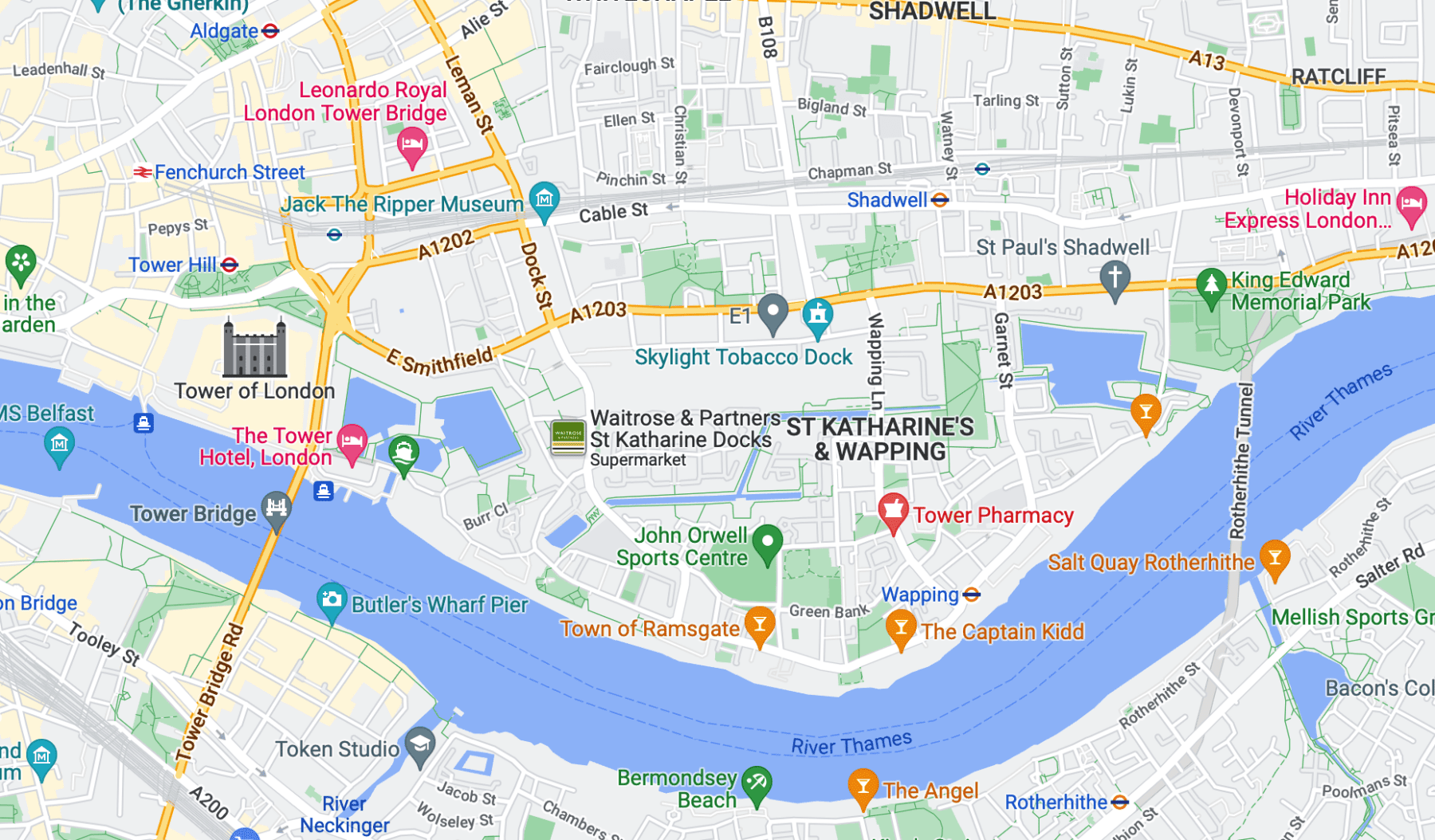
There are a number of ways to get to Wapping:
- By Rail: Wapping Station on the London Overground
- On the Docklands Light Railway: Wapping is walkable from Shadwell Station
- Bus Routes: D3, 100
- Boats: Wapping is walkable from the Tower Millennium Pier.
Note that both our City of London and All in One Tours finish at the Tower of London - just a short walk from Wapping.
Where was Execution Dock?
Used for over 400 years to execute pirates, smugglers and mutineers, Execution Dock was notorious throughout the capital. The "dock" itself was really just a scaffold for hanging on the edge of the river.
Many pirates executed here would have their bodies gibbeted and left hanging over the river to rot as the tides came in and out.
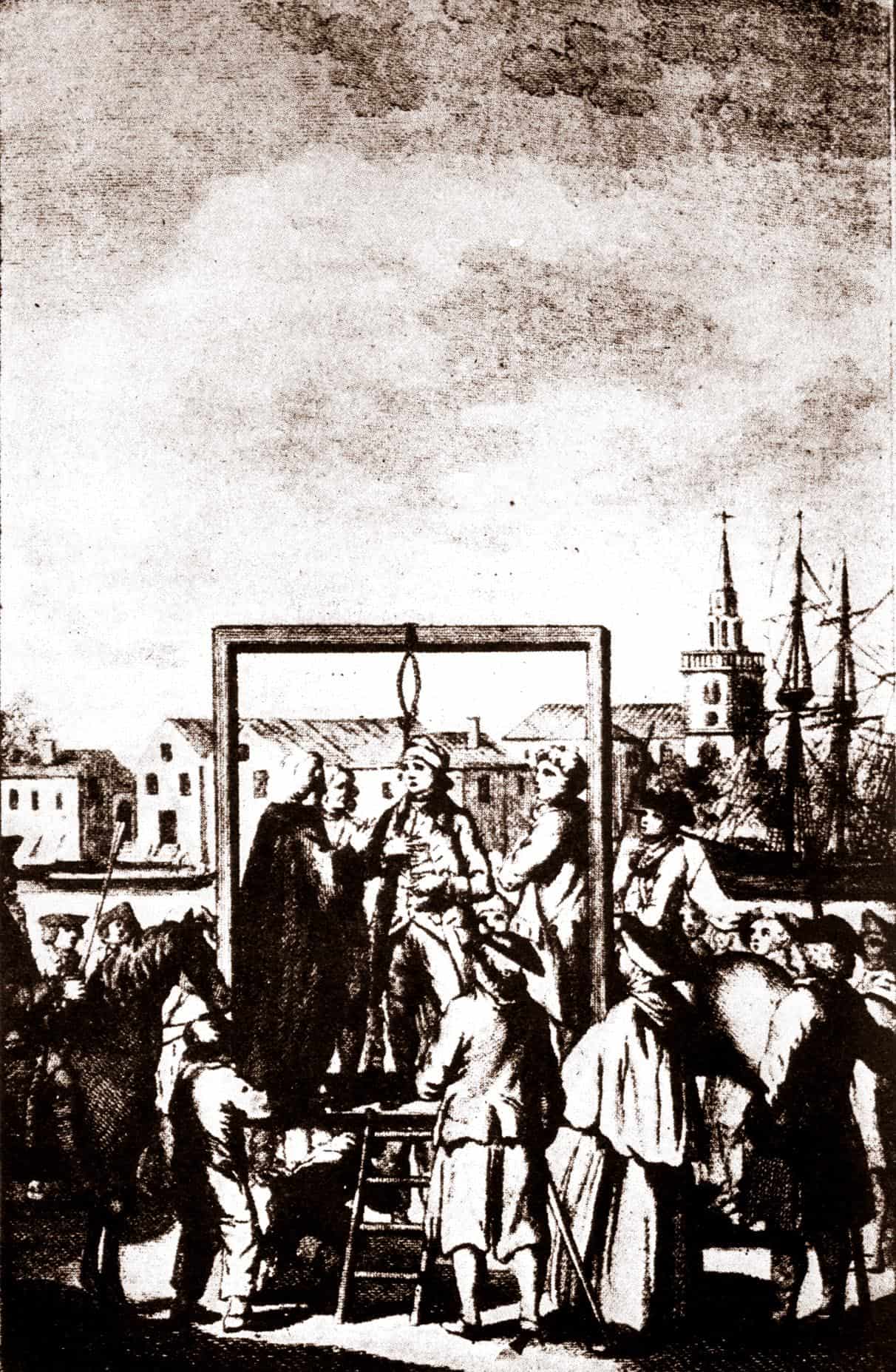
Execution Dock stood off of what is now Wapping High Street, quite near to the Overground Station.
There is a set of stairs and then an old iron ladder that gives access down to the beach where the gallows would have stood and it's only accessible at low tide.
What are the Pelican Stairs and Noose?
The Pelican Stairs are a set of stairs at the bottom of a very narrow alleyway that leads to a small beach on the edge of the River Thames.
It's believed the stairs were built the same time as the Prospect of Whitby, which flanks the edge of the alleyway and overlooks the beach.
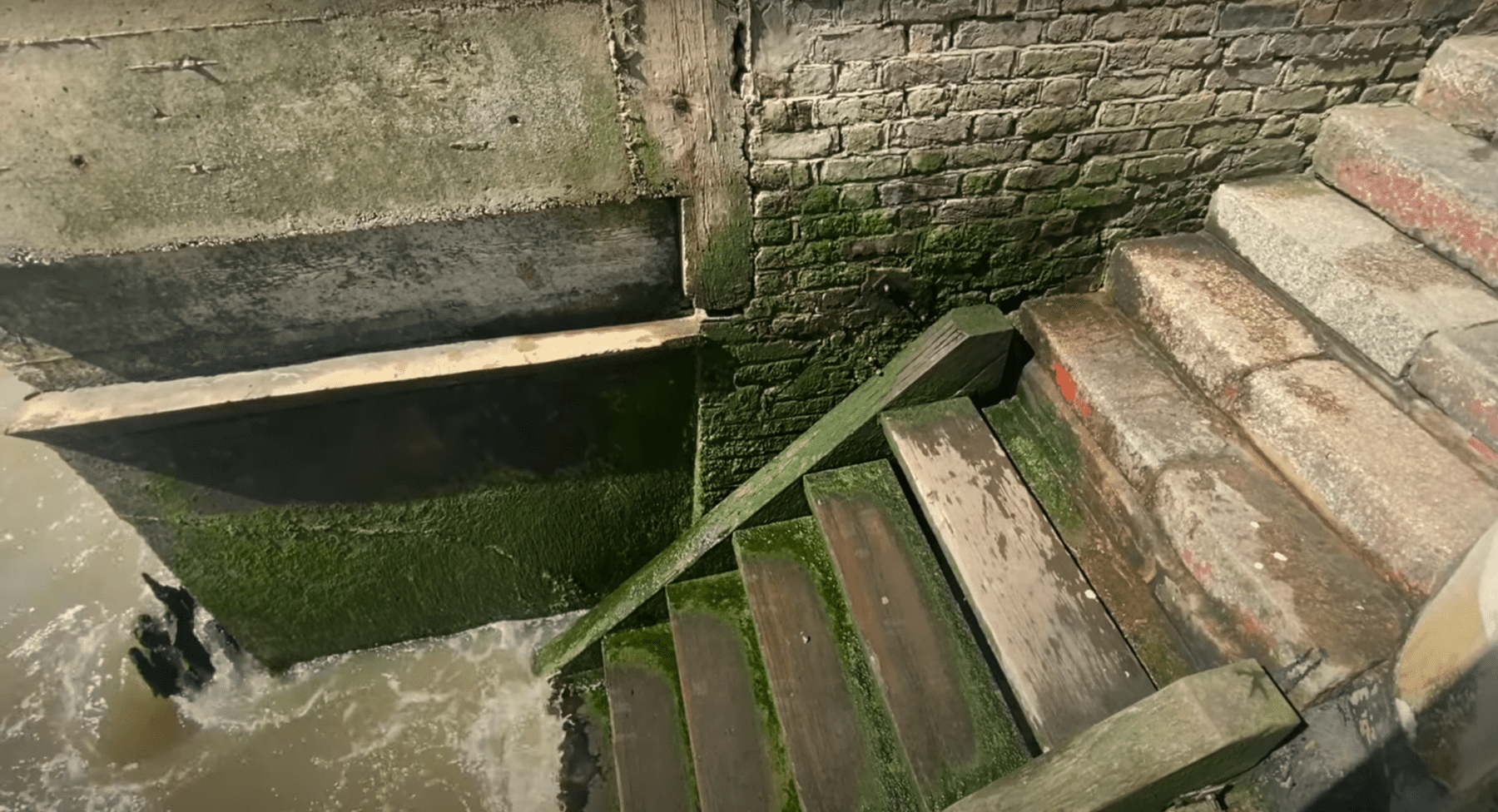
A charming little haven today, visible only at low tide, the stairs have a gruesome history and it's estimated around 200 corpses a year used to wash up here in centuries gone by.
A noose hangs over the beach today, a reference to the nearby Execution Dock and the hanging of criminals over the river that used to be commonplace in this part of the city.
The Prospect of Whitby Pub
The Prospect of Whitby is London's oldest riverside tavern, having existed in one form or another since 1520.
The stone flooring is original, with 18th century panelling and a 19th century facade.
Previously called The Pelican, as well as The Devil's Tavern, the pub became known as The Prospect of Whitby in the early 18th century, named over a Tyne collier that berthed nearby.
The pub had quite a dubious reputation for years, known to be a haunt for pirates and smugglers, as well as a favourite stop of Hanging Judge Jeffreys.
A replica noose hangs outside the pub over the river's edge as a nod to this former clientele.
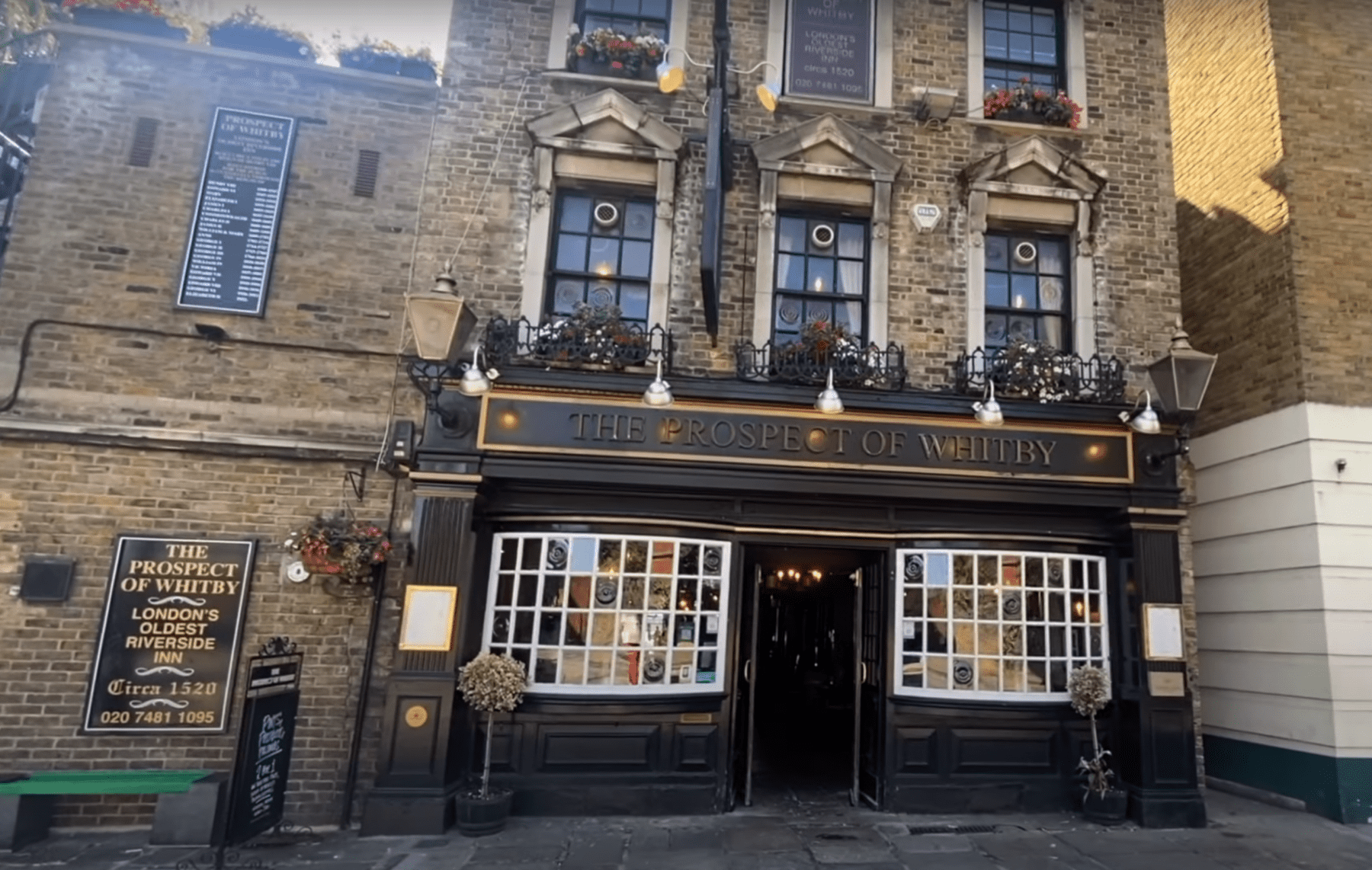
Both Turner and Whistler painted views from the pub and both Charles Dickens and Samuel Pepys were patrons.
In more modern times, Princess Margaret and Prince Rainier III of Monaco even stopped in.
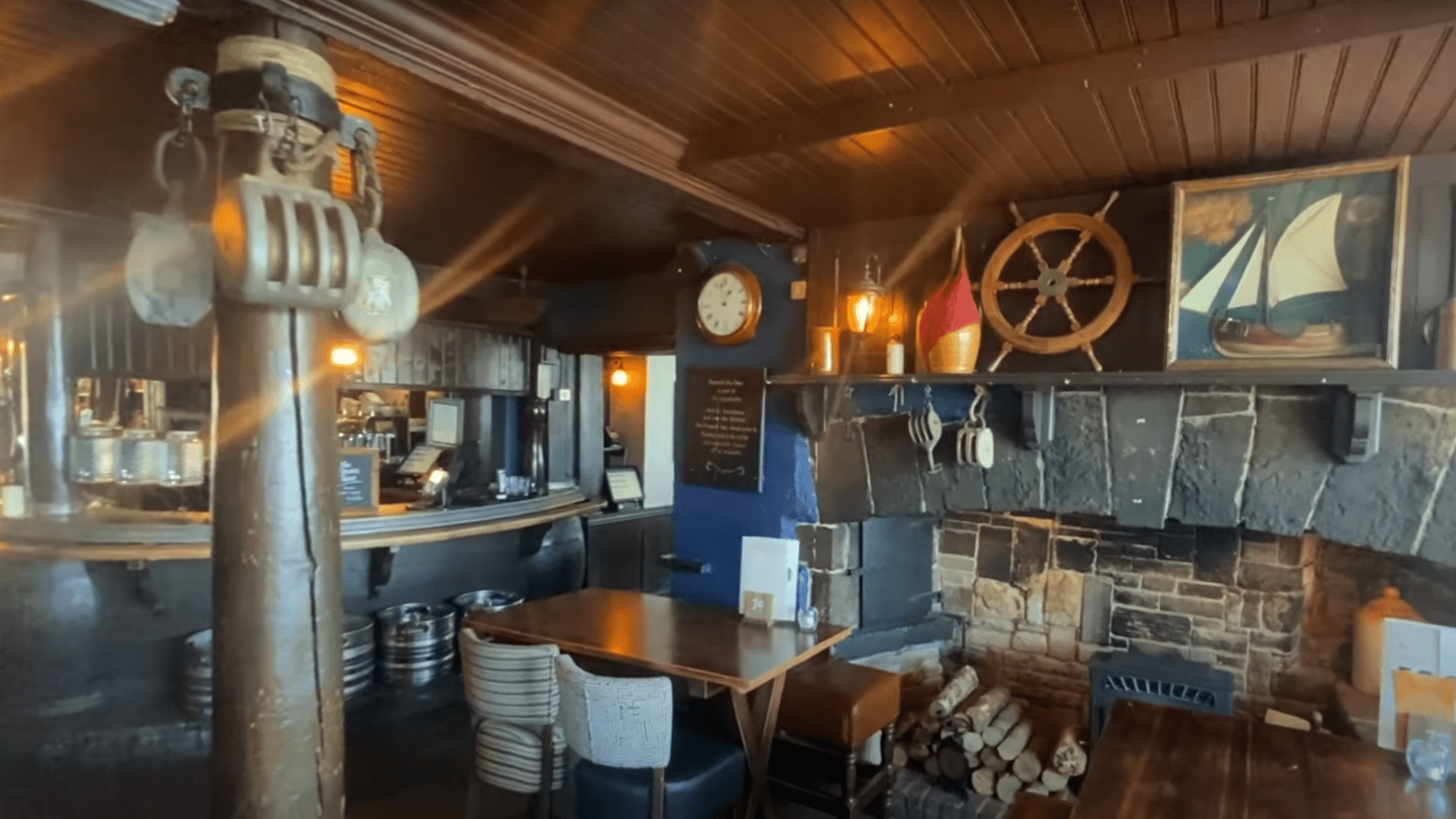
Although Wapping is relatively easy to get to, it does lay outside central London so you'll need to make an effort to get to the Prospect of Whitby - but it's worth it!
- Nearest Station: Wapping on the London Overground
- Nearest Docklands Light Railway Station: Shadwell
- Bus Routes: D3, 100
What Other Pubs are in Wapping?
Wapping has no shortage of historical pubs worth exploring!
Although the Prospect of Whitby is the oldest and best known, there are some other hidden gems nearby.
There's been a pub on this site for over 500 years, and the version that stands now has roots in the 16th century.
Previously known as The Red Cow it became known as Ramsgate Old Town in 1766 and The Town of Ramsgate by 1811.
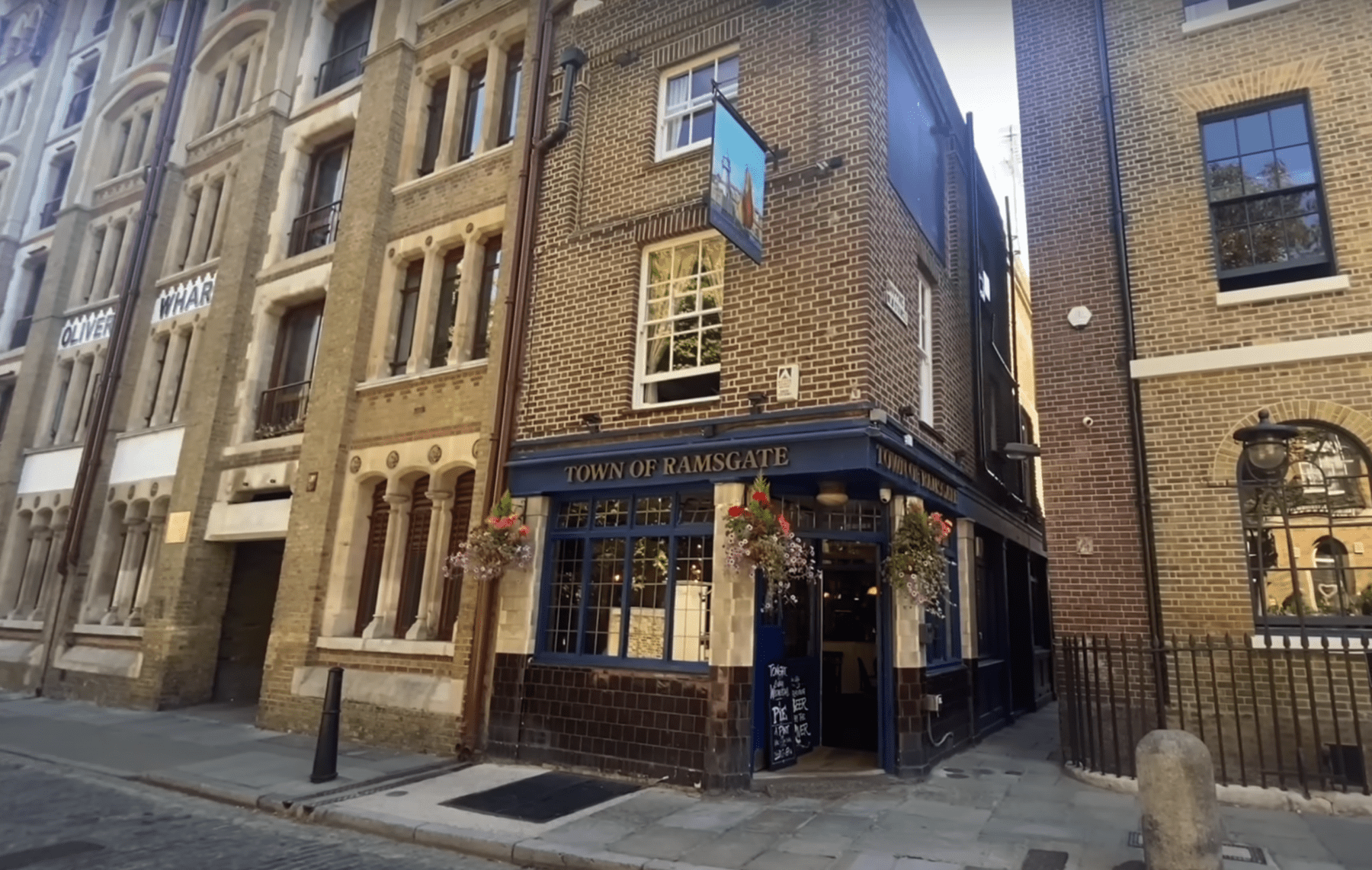
Another local haunt of Hanging Judge Jeffreys, the Town of Ramsgate was another pub frequented by maritime brigands and thieves.
The steps adjacent to the pub give access to the river's edge which saw the departure of thousands of sailors, the return of few less than that, and is the location where William Bligh inspected and purchased the ill-fated Bounty.
A poem displayed int he pub is a gentle nod to the history seen here: “Your Polly has never been faithless she swears, since last year we parted on Wapping Old Stairs."
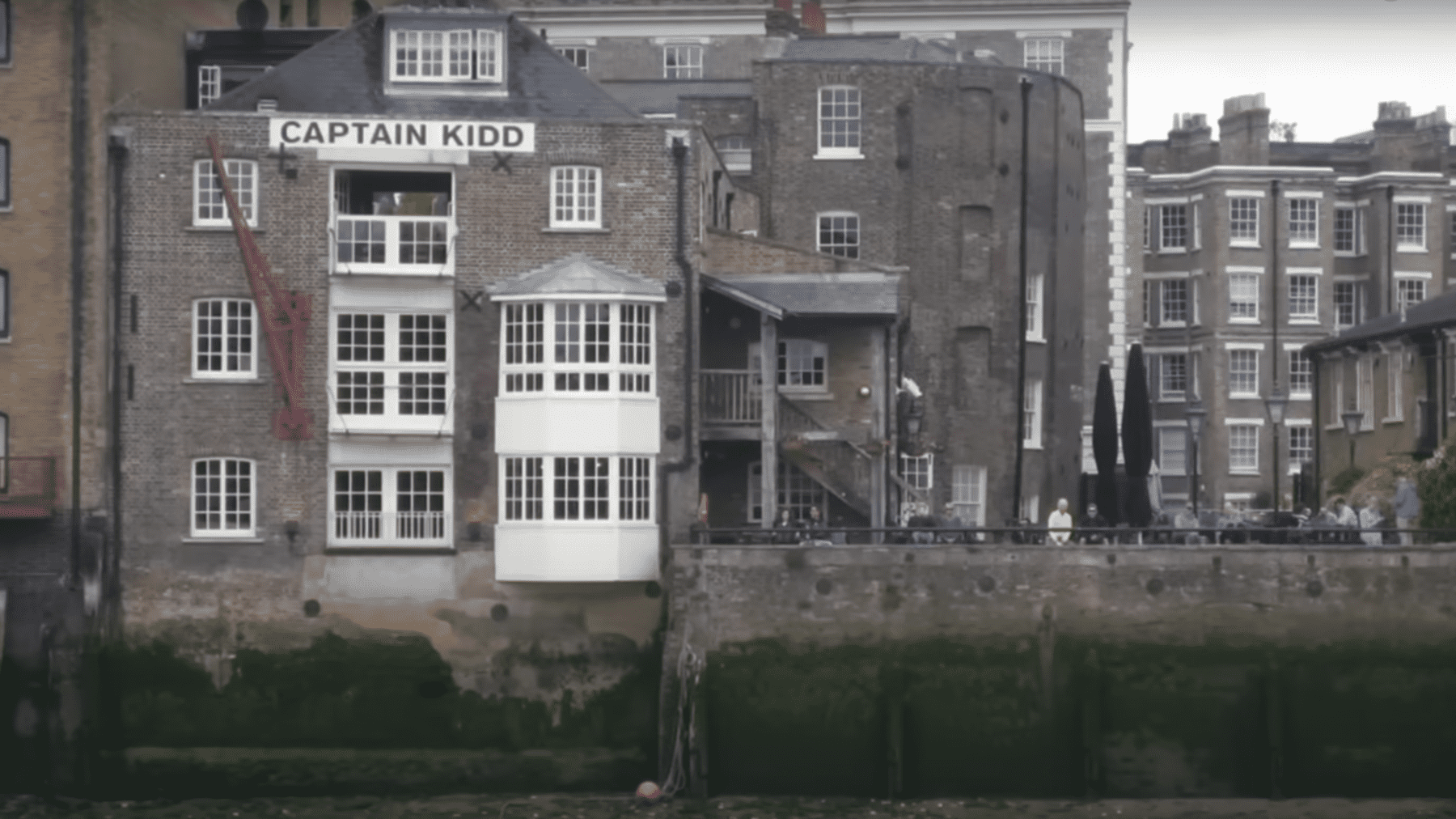
Run by Sam Smith's, the Captain Kidd is named after the notorious pirate whose life was ended at nearby Execution Dock in 1701.
Everything inside is made of wood and has a reference to the maritime history of Wapping.
This is a newer pub in wapping, built in the 1980's in what was previously a coffee warehouse.
The old warehouse space means the pub boasts three stories and the old crane mechanism for hoisting the coffee shipments into the warehouse still stands on the river side of the pub.







